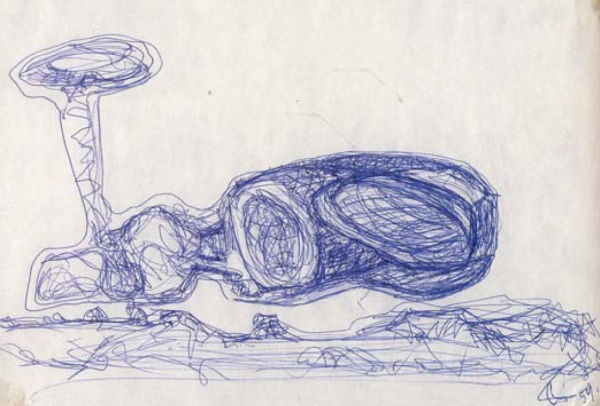Endless House | Frederick Kiesler

Frederick Kiesler was born in 1890 in Czernowitz (then a part of the Austro-Hungarian empire, but now in Ukraine). Studied at the Technische Hochschule but without finishing his studies, he started a brief collaboration with architect Adolf Loos in 1920, and in 1923, he became a member of the De Stijl group. The Endless House is not a real building, is just a vision in Kiesler’s mind and its practical realisation has never come pass. In his writings Inside The Endless House, published in 1966, he talks with these words about his most interesting project:
The Endless House is called the “endless” because all ends and meet continously.
It is endless like the human body. There is no beginning and end to it. The “Endless” is rather sensuous. More like the female body in contrast to sharp-angled male architecture.
All ends meet in the “Endless” as they meet in life. Life’s rhythms are cyclical. All ends of living meet during twenty-four hours, during a week, a lifetime. They touch one another with the kiss of time. They shake hands, stay, say goodbye, return through the same or other doors, come and go through multi-links, secretive or obvious, or through the whims of memory.
One box next to another.
One box below another.
One box above another.
Until they grow into tumors of skycrapers.
The coming of the Endless House is inevitable in a world coming to and end. It is the last refuge for man as man.


Matthew Krissel pointed in his work Frederick Kiesler – Inside the Endless House that “Since Kiesler’s death in 1965, his notion of Endless Space and his studies of the Endless House in particular, have resurfaced in recent architectural discourse. New technologies have emerged that are now provoking different questions regarding the tectonics and material potentials within the concept of The Endless House.”
There are many contemporary architects like Ben van Berkel and Caroline Bos from UNStudio, Asymptote, researcher and writer Dieter Bogner and engineers like Cecil Balmond that have studied Kiesler’s work and especially the Endless House as an example to change the face of architecture. Inspired with biomorphic design, the Endless House was based on this vision about organically shaped spaces.


Kiesler talked repeatedly about an elastic spatial concept, wich must be capable, even in a small house, of providing an optimun response to the very varied social concerns of its occupants. He wrote in his Manifeste du Corréalisme: “Between the corporeal units there lie the various empty fields of tension that hold the parts together like planets in a void“ and we can summarize all his works and dreams about the Endless House with this note at the same Manifesto:
“Sans perdre leur intégrité: le tableau devenant architecture, la sculpture devenant tableau, et l’architecture devenant couleur”



About this entry
You’re currently reading “Endless House | Frederick Kiesler,” an entry on dpr-barcelona
- Published:
- September 21, 2009 / 9:06 am
- Category:
- Architecture, English, History
- Tags:
- architects, Architecture, History

12 Comments
Jump to comment form | comment rss [?] | trackback uri [?]